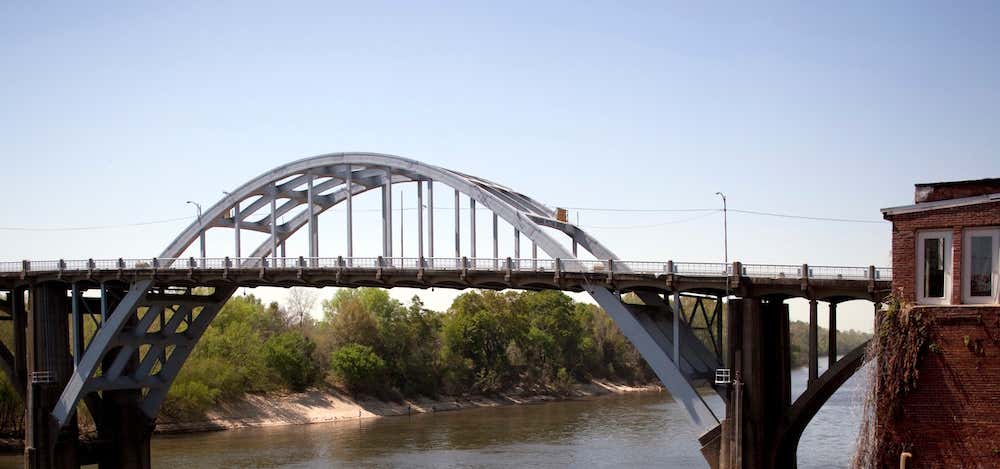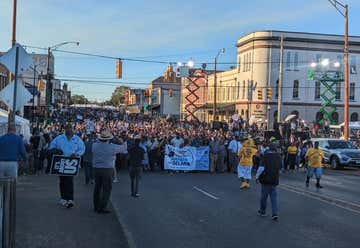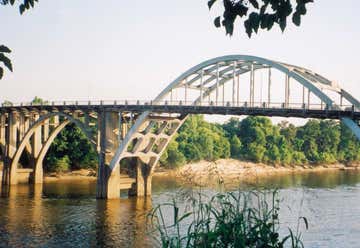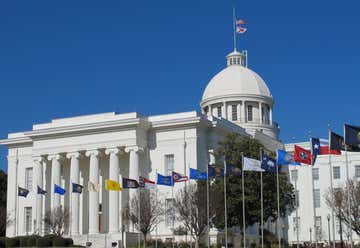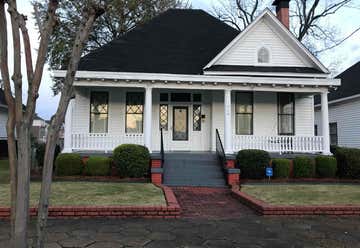The 54-mile Selma to Montgomery National Historic Trail was established by Congress in 1996 to commemorate the 1965 Voting Rights March from Selma to Montgomery, Alabama. Led by Dr. Martin Luther King Jr., the participants—committed to King's non-violent ways—began at the Brown Chapel AME Church in Selma. As they crossed the Edmund Pettus Bridge on March 7, 1965, marchers were beaten on a day that has become known as "Bloody Sunday." The 5-day march that followed included 25,000 marchers and ended near the Montgomery capitol building on March 25th.
The Selma to Montgomery National Historic Trail officially starts at the Selma Interpretive Center, but marchers technically started up the street at the Brown Chapel AME. Stop by to see the Dr. Martin Luther King Jr. bust and memorial outside and then head to the trail's official starting point, the Selma Interpretive Center.
The Selma Interpretive Center helps frame the next 54 miles; visitors can learn more about the marches from Selma to Montgomery and the resulting passage of the Voting Rights Act.
The most famous spot along the trail is the Edmund Pettus Bridge. The bridge became a rallying cry for the Civil Rights movement after armed police and townspeople attacked non-violent marchers (including John Lewis) on March 7, 1965. Known as “Bloody Sunday,” photos showing the horrible violence that took place on the bridge would propel the voter registration movement forward and led to the eventual passing of the Voting Rights Act.
Before heading out of Selma, stop at the National Voting Rights Museum located in the Historic District at the foot of the Edmund Pettus Bridge. The museum features multiple exhibits and specially-designed tours to celebrate the ongoing struggle for equal voting rights in the U.S.
After crossing the Edmund Pettus Bridge travel nearly half-way to Montgomery before stopping at the Lowndes Interpretive Center. Located near “Tent City,” a settlement on Black-owned property near Route 80 in Lowndes County where marchers rested, the center features powerful stories from people involved in the historic events.
Follow signs around town to stay on the actual march route until you reach the steps of the Alabama State Capitol, where the original march concluded on March 25, 1965.
While not part of the official trail, Montgomery has plenty of historically-significant sites and museums. At the Dexter Parsonage Museum, visitors can see the residence where Dr. King and his family lived between 1954 and 1960.
The Civil Rights Memorial Center, located across the street from the Southern Poverty Law Center, is dedicated to the lives lost during the Civil Rights Movement. Created by Maya Lin—the designer of Washington, D.C.'s Vietnam War Memorial—the Civil Rights Memorial also features names engraved into black granite.
The Freedom Rides Museum is located in a historic Greyhound bus station-turned-museum and showcases the bravery of the 21 “Freedom Riders” who were challenging the practice of segregated travel through the South. Although they did not begin or end their journey in Montgomery, they stepped off the bus on May 20, 1961 prepared to meet a violent mob.
Roadtrippers
Roadtrippers helps you find the most epic destinations and detours—from roadside attractions to natural wonders and beyond.
